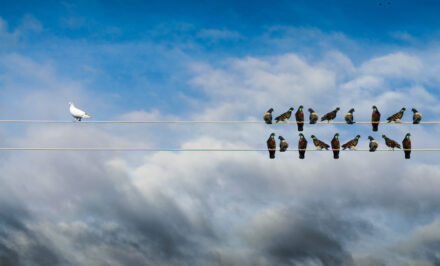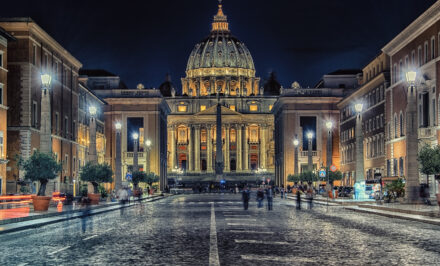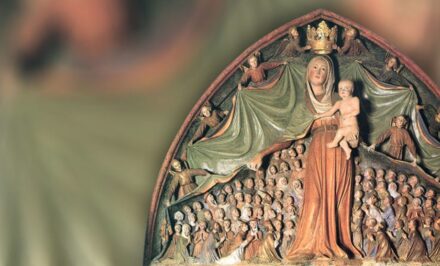 Dr. Alicja Kostka. The decision to stop Joseph Engling’s process for the moment has caused some consternation among his devotees. The group of people who are responsible for the homepage www.engling.pl have even asked whether this information should be publicised.
Dr. Alicja Kostka. The decision to stop Joseph Engling’s process for the moment has caused some consternation among his devotees. The group of people who are responsible for the homepage www.engling.pl have even asked whether this information should be publicised.
The people in Poland, where Engling’s home is situated today, are anyhow sceptical about the chances for his process of beatification. The decision of the competent Roman authorities in this regard seems to confirm this cautious view. I was only roused from my disappointment by a saying of Horst Meyer, an old friend of Joseph Engling who now belongs to the Family Institute. He quoted a verse from the so-called “Leaders’ Prayer” in “Heavenwards”, while emphasising the word “as a result“.
Fr Kentenich prayed in this prayer,
“Grant that Joseph Engling may soon be canonised
and as a result break down all obstacles
placed in the way of its (the “favourite creation”, Schoenstatt’s) effectiveness,
and prevent the Father’s plan from being seen in faith.”
The decision in Rome in the middle of the Father Year – an invitation to us?
Why has this news reached us just in the middle of our Father Year? We may ask this question through faith in Divine Providence. In order to be able to answer this question, we have to mention the Father-Son relationship that existed between Fr Kentenich and Joseph Engling, as well as Fr Kentenich’s faith and conviction that Schoenstatt is God’s work and hence a gift to the Church.
Fr Kentenich quoted Fr Schulte, “Engling personally believed firmly in Schoenstatt’s special calling. This faith was the reason for his specific way of saying things, for his certainty in victory, and his strong mission consciousness. His unshakable conviction in this special mission gave him the strength to make every sacrifice for this task, and even to offer his life to the Blessed Mother for the realisation of this idea…” (Letter 1954). Joseph Engling’s beatification, which Fr Kentenich always expected “in the foreseeable future”, stood in his opinion for the authentication of Schoenstatt as a work of God. As Peter Wolf emphasises, “This is the only way to understand the second line, that ‘as a result all obstacles will be broken down …'” (Gebetsschule Himmelwärts)
Joseph Engling stands for the co-operation of the whole Family with the new divine initiative and the new breakthrough of God’s grace in Schoenstatt (“nothing without us”). We find him at the beginning of Schoenstatt’s history “like a gigantic divine design that God used constantly as an orientation in the time that followed for building up and leading the Family” (cf. Chronicle Notes for the Archive 1957). Since this design will never lose its validity, it reminds us as we prepare for the jubilee of God’s “rules of the game” according to which he will continue to build this work. Perhaps we have even to emphasise them in this time of grace.
The Third Miracle of the Holy Night – with Joseph?
During the time of our Father’s exile, Joseph Engling was a bridge leading to him –the “Father Current” developed and was essentially kept alive by “the son”. Our Father’s return home from Milwaukee happened – according to our Father’s own words – through Cambrai: On 12 September 1965 the Shrine of Unity at the place where Joseph Engling died in Cambrai was blessed; a day later Fr Kentenich received the telegram summoning him to Rome. On his way from Milwaukee, the plane flew over France and he consciously “waved” to Joseph Engling in Cambrai from high up in the sky. The “Second Miracle of the Holy Night” took place through the co-operation of the whole Family, which stood to our Father with childlike and victorious loyalty. Since Joseph was always connected with our Father, is it not necessary for him to be essentially involved in the “Third Miracle of the Holy Night”, and blaze a trail for our Father into the Church? Now, when we are expecting a new “Cor unum in Patre”, shouldn’t his son be drawn more strongly into the foreground? Doesn’t the sudden pause in his process draw our attention to him – although we are baffled and discouraged, but precisely because of this also invited to do so?
“Canonise him yourselves!”
When Pople John Paul II was asked by the Schoenstatt Family to beatify Fr Kentenich at the time of his hundredth birthday, he replied on St Peter’s Square: “Canonise him yourselves!” By analogy can we not say with regard to Joseph Engling and the current state of his process, “Get the process started again!” through living in Joseph Engling’s spirit? Isn’t it an invitation to re-discover Engling’s spirit once again, so that we integrate him more strongly into our thinking, living and loving? Could we perhaps offer him a new form for this spirit that is adapted to our present times?
What is Engling’s spirit today? Let me try to summarise it in four points:
1. The reality of the covenant of love with Mary. Invite her sincerely into your everyday life and live it with her, sharing everything with her.
2. Childlike attachment to our Father and Founder – on the way to personal holiness.
3. Serious striving to entrust ourselves and those around us, or entrusted to our care, in the spirit of the personal ideal – the way God wants me/us to be.
4. Identification with Schoenstatt’s mission and the readiness to give our all, even our lives, for it as Joseph Engling did.
Fr Kentenich would say for this: “Live your first love!” Many of us have experienced a real friendship with Joseph Engling; now we have to refresh this friendship, discover it once more, and make it fruitful for the Kairos 2014. Our tried and tested friend will surprise us and reward us richly.
In 2012 a hundred years will have passed since Joseph Engling arrived in Schoenstatt from Prositten. Shouldn’t he come to Schoenstatt once more through our intensified childlikeness towards our Father? His arrival could be compared with spring, as Fr Kentenich put it, “In the first springtime of our Family history the world broke into most beautiful flower in him, and in the time that followed it drew in others, so that together with him their lives gradually grew into vital life” (Letter 1954).
Isn’t the triennium a most suitable time to prepare a new springtime with Joseph, and like him with our Father? Like Joseph we could make our Father’s work our own, and bear it into the Church, and in this way “beatify” him in our small groups.
“Whoever sees me, sees the Father” (cf. Jn 14,9b)
The participants at the “Conference 2014” described the grace of the Jubilee Year 2014 on many coloured pieces of paper and in many colourful words. One of them turned up in the various languages and sounded particularly interesting. It was: “To become a little Kentenich”. If each one of us were to become a “little Kentenich” in our own way, bringing to life the spirit of the founder, offering him an opportunity to work effectively in each one of us with his charism, a “Kentenich life-style” would become a reality in many areas of life, in many faces and forms. In this sense Joseph Engling was the most faithful son of our Father, who said of him, “I personally believe that I can honestly testify (something no one of us would dare to say) that he not only took up all the essential ideas in my talks and discussions, but remembered them faithfully and assimilated them constantly” (Chronicle Notes for the Archive, 1957). Faithful sons and daughters of our Father are not afraid to be “the most precious flowering of our generation” as Joseph was (J.K), in order to spread a “Kentenich aroma” and point to him.
Doesn’t the Gospel of the Octave of Mercy Sunday this year include an inspiration and prophetic message to us, Engling’s brothers and sisters and children of our Father, “Whoever sees me, sees the Father”?
Via Cambrai (and Prositten) to Rome!
This spirit is beautifully illustrated in the symbolism of the wayside shrine at Eswars, France. It is an expression of a life’s programme for the Schoenstatt Women’s Federation: On the streets of this world, united spiritually, lead a deep spiritual life!” In 1966 it was placed on the roadside at Eswars (today it can be found in the Eswars cemetery) in the shadow of the hedge where Joseph made the last entries in his spiritual schedule and set out on his last march. It is a permanent sign of the presence of this community in Cambrai/Eswars.
“Via Eswars to Rome” gives expression to the expectation that Joseph Engling will get involved in our Father’s entry into the Church through his beatification, in the same way as he did for his return from exile. Since 1975 this intention has been strongly connected with the wayside shrine at Belmonte, the precursor of the Matri Ecclesia Shrine. It is a copy of the one at Eswars. A course of Federation Priests “discovered” this symbol before the blessing of the shrine in 2004, and through it discovered their course ideal. The way to Rome leads via Cambrai/Eswars: along the streets where the everyday lives of Schoenstatters take place. This modern form of holiness is permanently embodied in Joseph and finds new inspiration from him all the time.
However, this road also leads through Prositten. Joseph wrote in his diary, “Such love (as he found in his family) has to reign also in Schoenstatt”. Despite all the chaos of the post-war years his family home has remained the property of the Schoenstatt Family. Even though his family is no longer there, this house breathes the atmosphere of this family in which Joseph grew up. At the same time it is a simple symbol of Fr Kentenich’s vision: Schoenstatt (the Church) – a family, a home. The simplicity of the outward means, with open hearts for all who come. Let us unite with Joseph and prepare the way for our Father into the heart of the Church, into the heart of Schoenstatt, but also – and above all – into our own hearts. He will then work miracles.
All quotations, except from the diary, are taken from a collection of texts made by Fr Josef Maria Klein and entitled: Fr Joseph Kentenich, Joseph Engling, Collected Texts” (not yet translated into English).
Translation: Mary Cole, England













